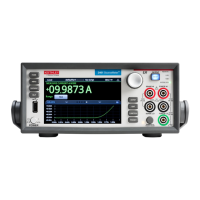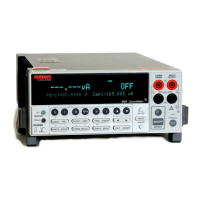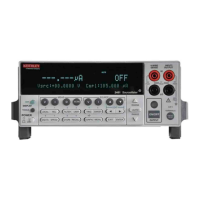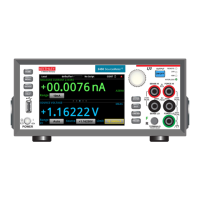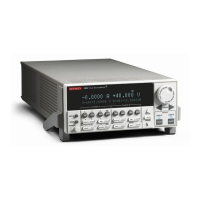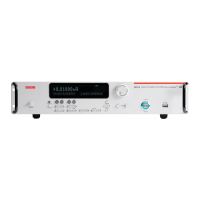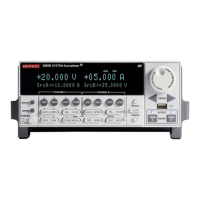4-14 Troubleshooting
Battery replacement precautions
WARNING The following precautions must be followed to avoid personal injury.
1. Wear safety glasses or goggles when working with lithium batteries.
2. Do not short the battery terminals together.
3. Keep lithium batteries away from all liquids.
4. Do not attempt to recharge lithium batteries.
5. Observe proper polarity when installing the battery.
6. Do not incinerate or otherwise expose the battery to excessive heat (>60°C).
7. Bulk quantities of lithium batteries should be disposed of as hazardous waste.
Battery replacement procedure
1. Remove the case cover and analog board assembly as covered in Section 5.
2. Locate the battery on the digital board.
3. Carefully unsolder and remove the old battery.
4. Install and solder the new battery in place.
5. Re-assemble the instrument, and turn it on. The “Reading buffer data lost” error message
will be displayed.
6. Send the :SYST:MEM:INIT command via remote to perform the following:
• Clear the reading buffer.
• Initialize instrument setups 1 through 4 to present instrument settings.
• Initialize all 100 source memory locations to present instrument settings.
• Delete user math expressions.
No comm link error
A “No Comm Link” error indicates that the front panel processor has stopped communicating
with the main processor, which is located on the digital board. This error indicates that one of the
main processor ROMs may require re-seating in its socket. ROMs may be reseated as follows:
1. Turn off the power, and disconnect the line cord and all other test leads and cables from
the instrument.
2. Remove the case cover as outlined in Section 5.
3. Remove the analog board assembly as outlined in Section 5.
4. Locate the two firmware ROMS, U15 and U16, located on the digital board. These are
the only ICs installed in sockets. (Refer to the component layout drawing at the end of
Section 6 for exact locations.)
5. Carefully push down on each ROM IC to make sure it is properly seated in its socket.
CAUTION Be careful not to push down excessively; digital board could crack.
6. Connect the line cord, and turn on the power. If the problem persists, additional trouble-
shooting will be required.

